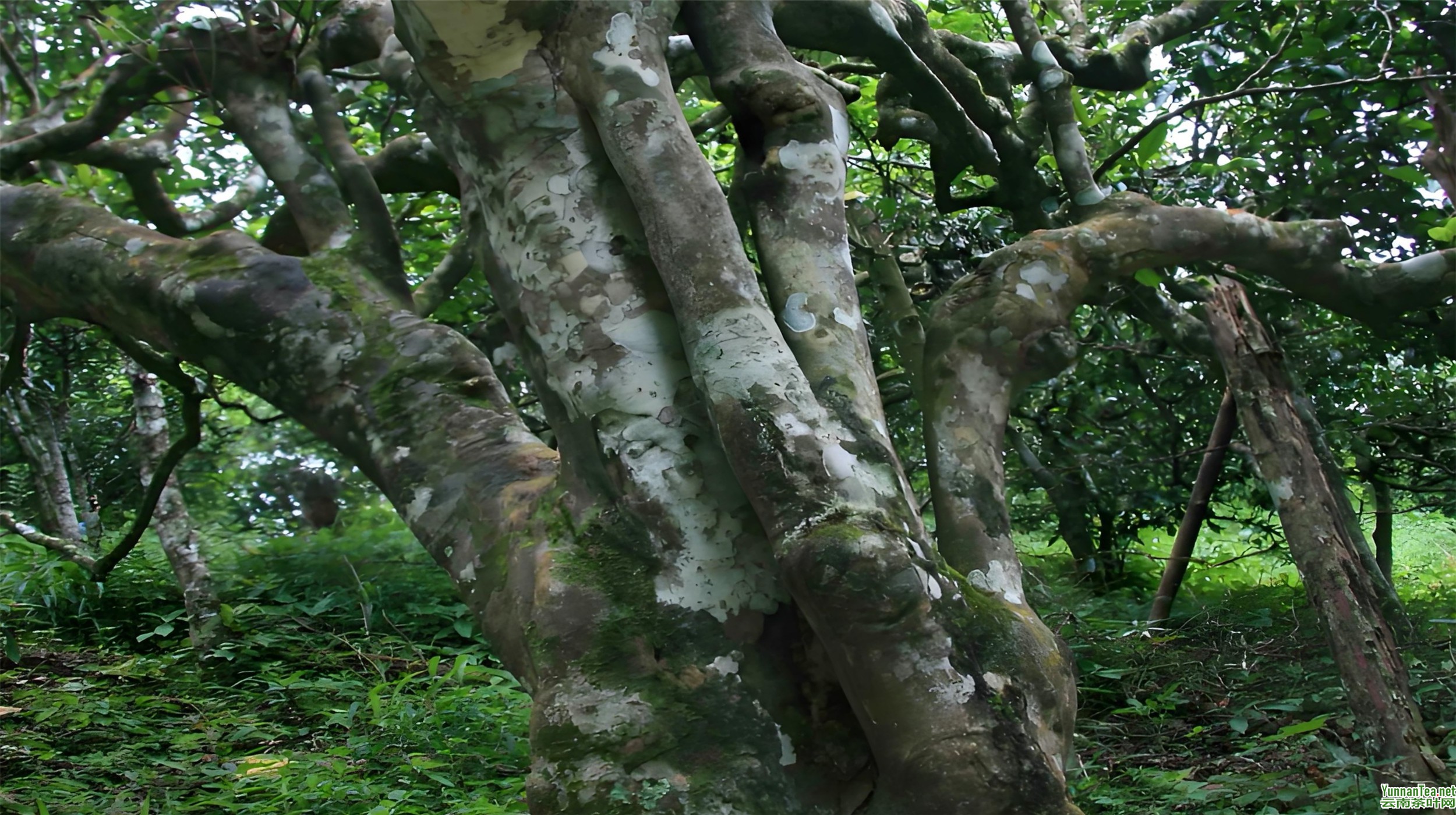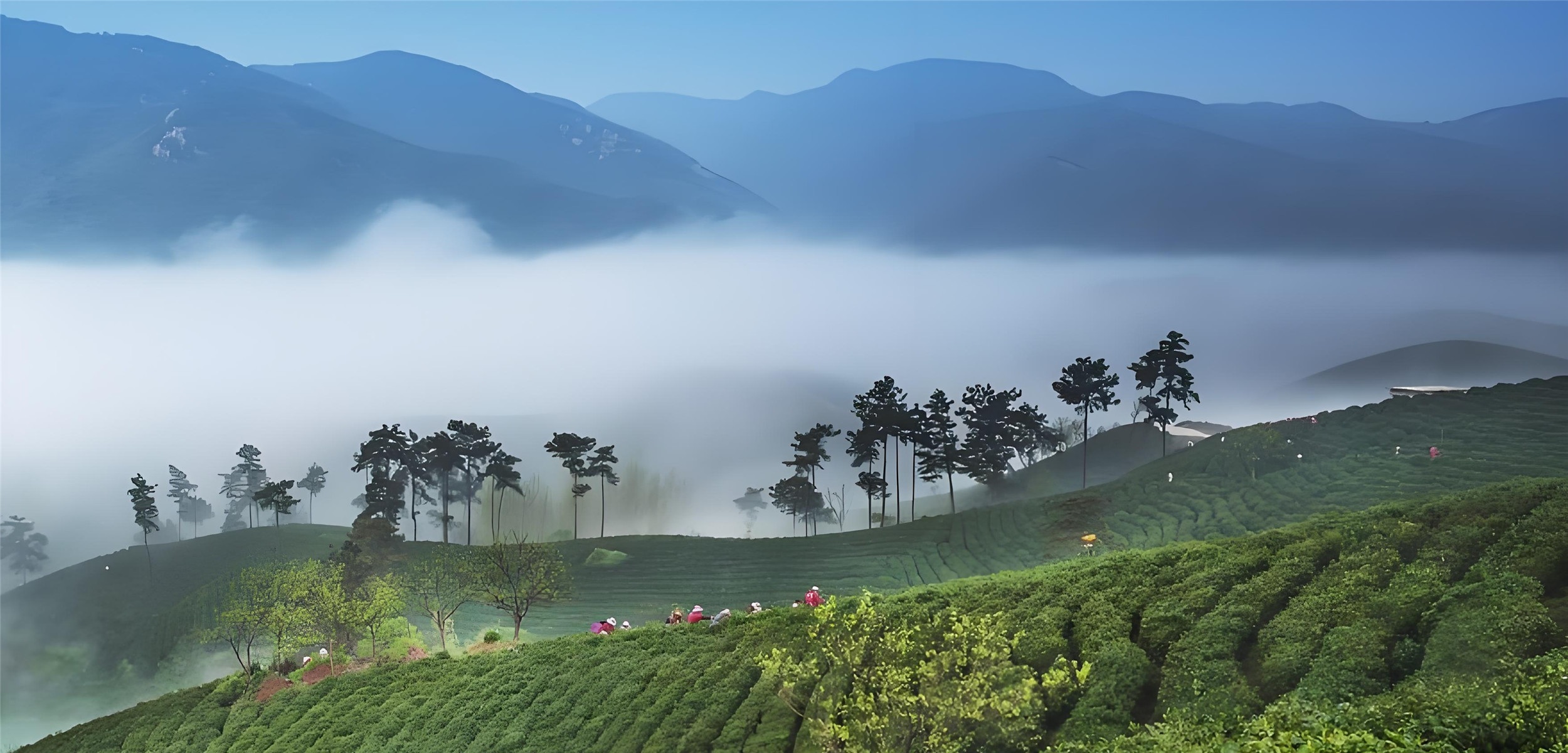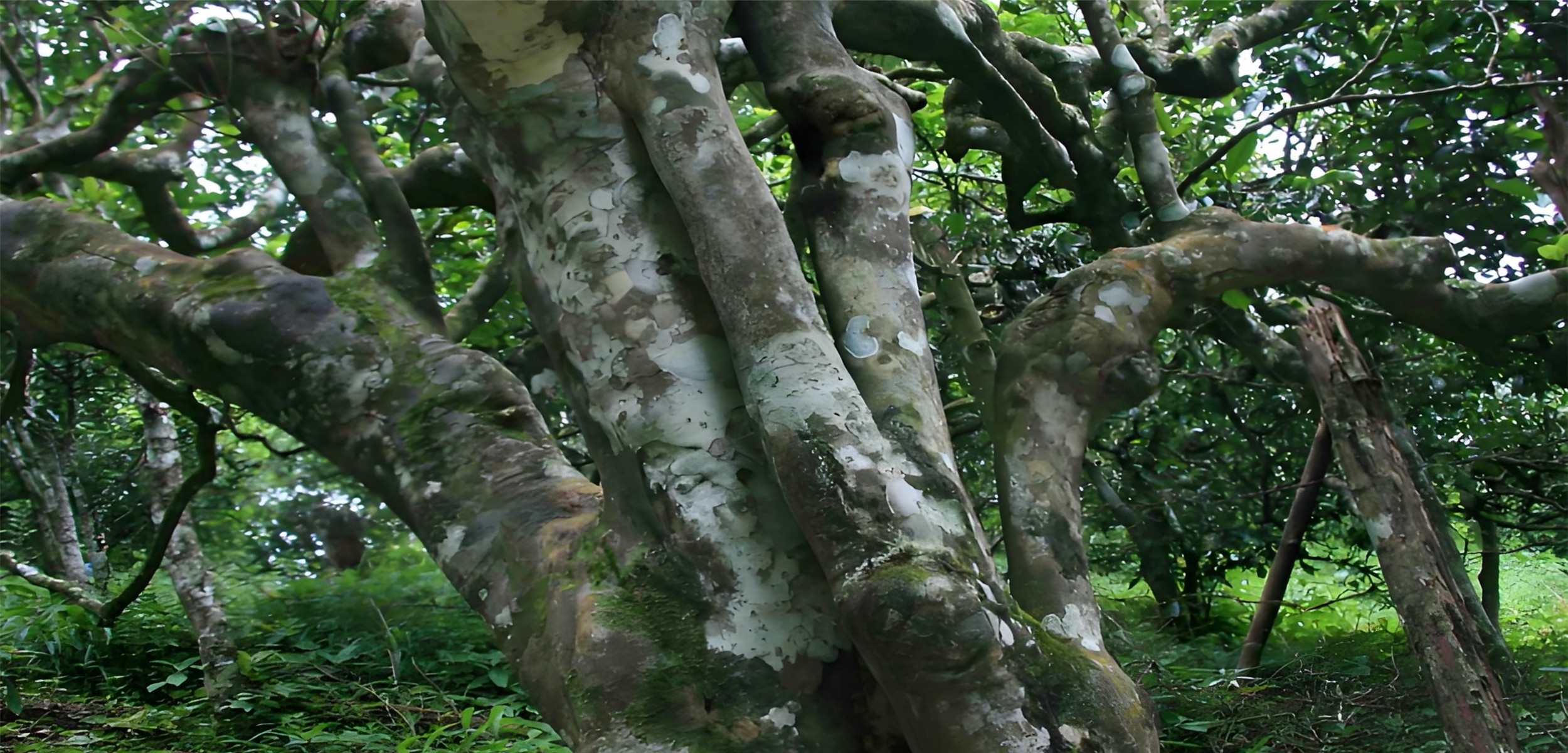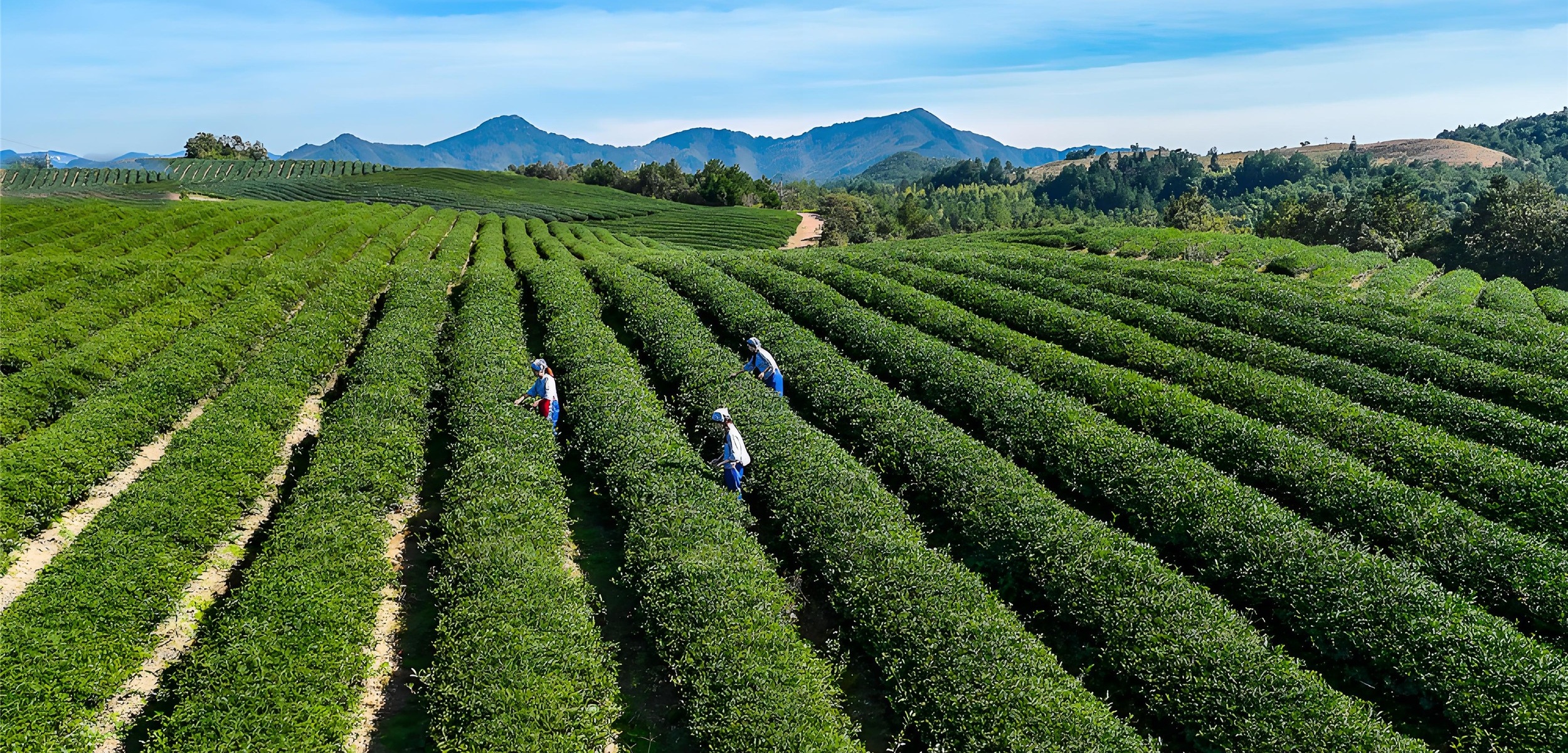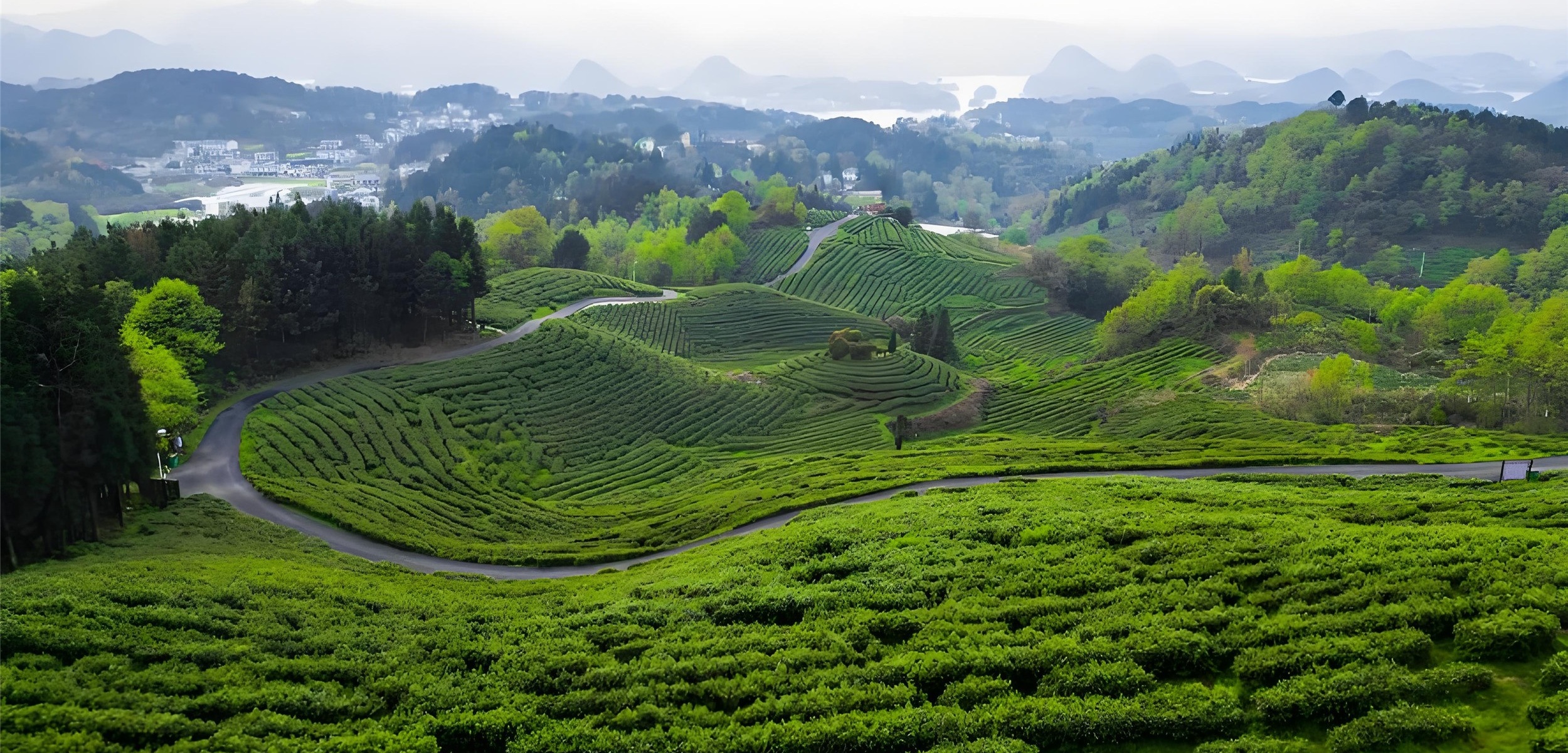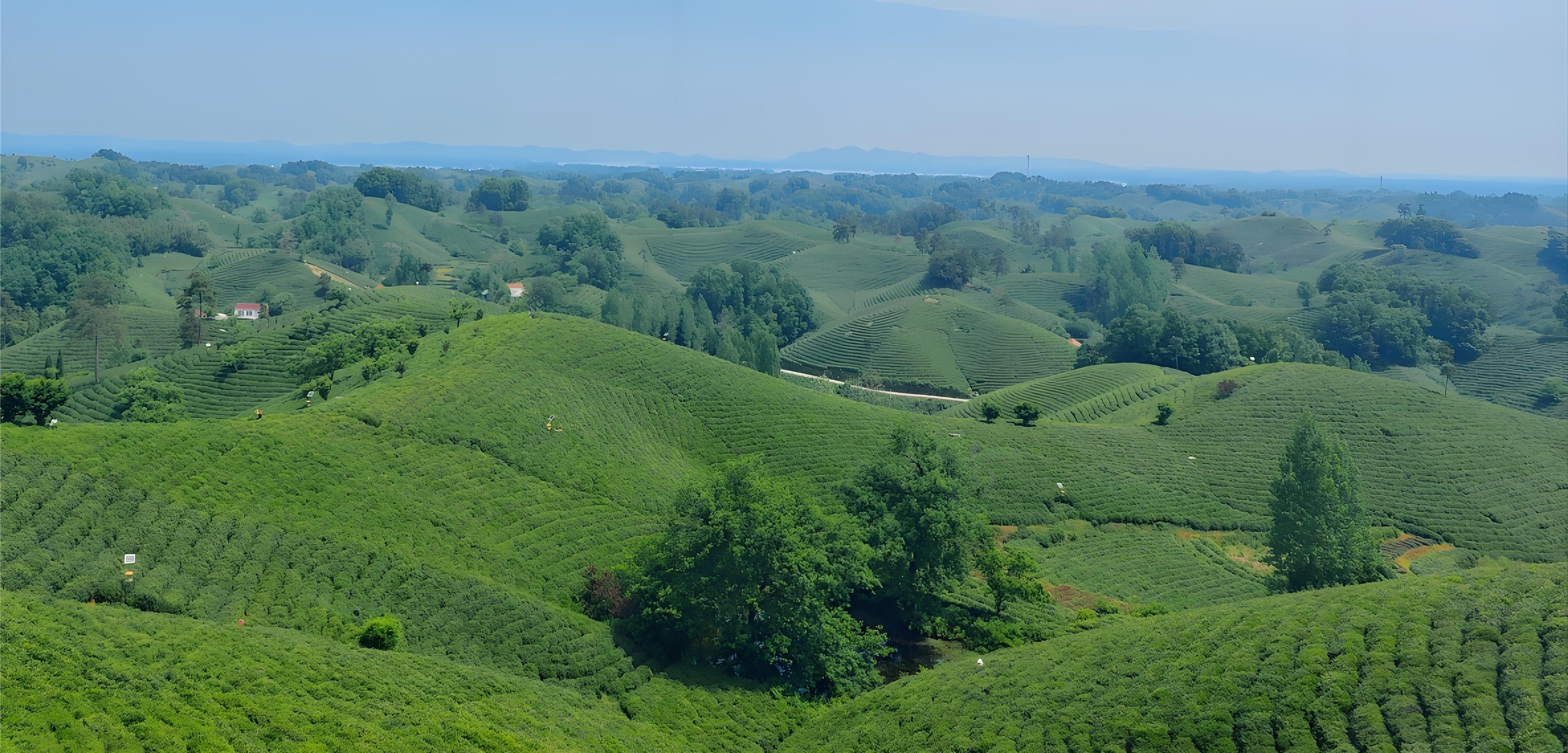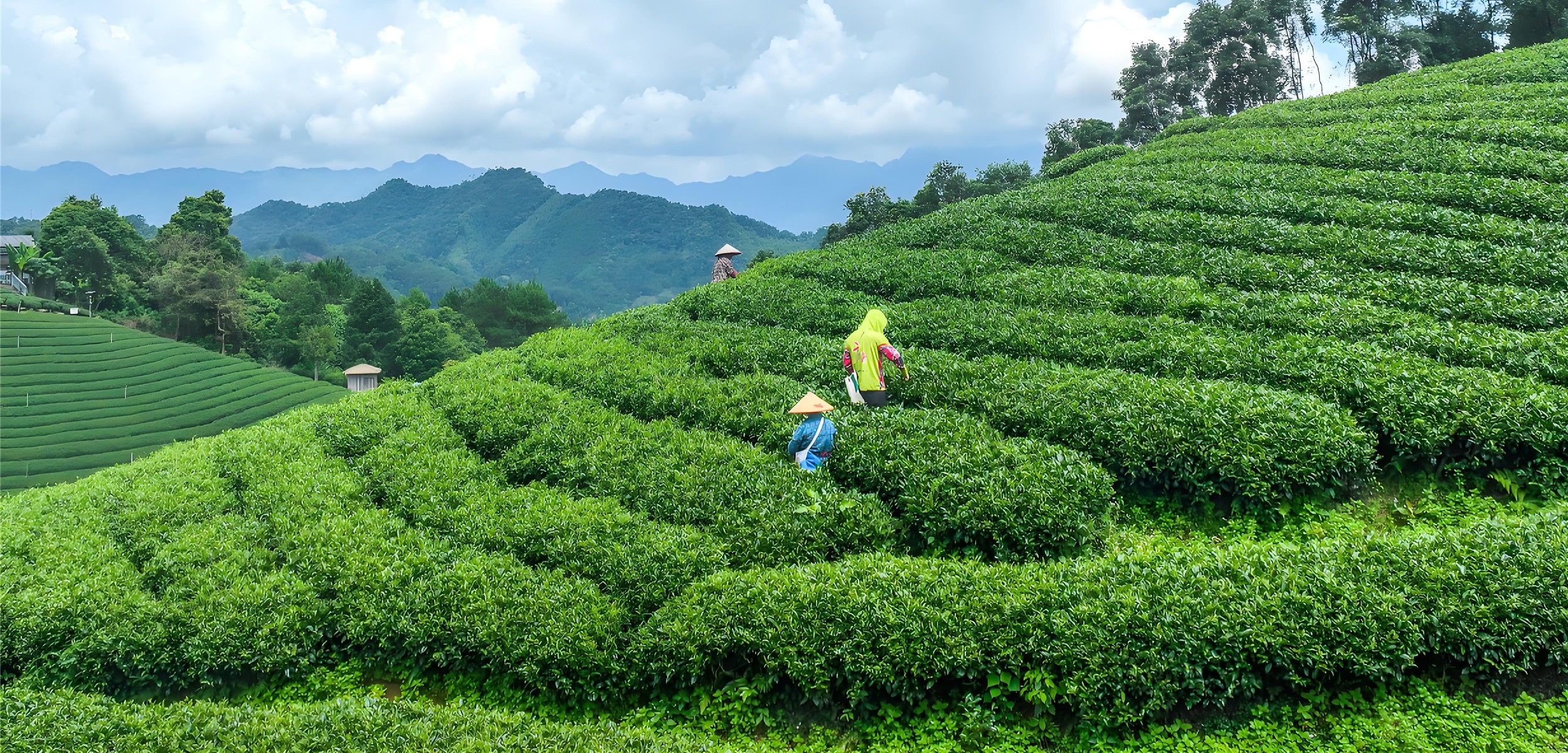云南茶叶:自然馈赠与人文沉淀的千年交响 Yunnan Tea: A Millennium Symphony of Natural Gifts and Cultural Sedimentation
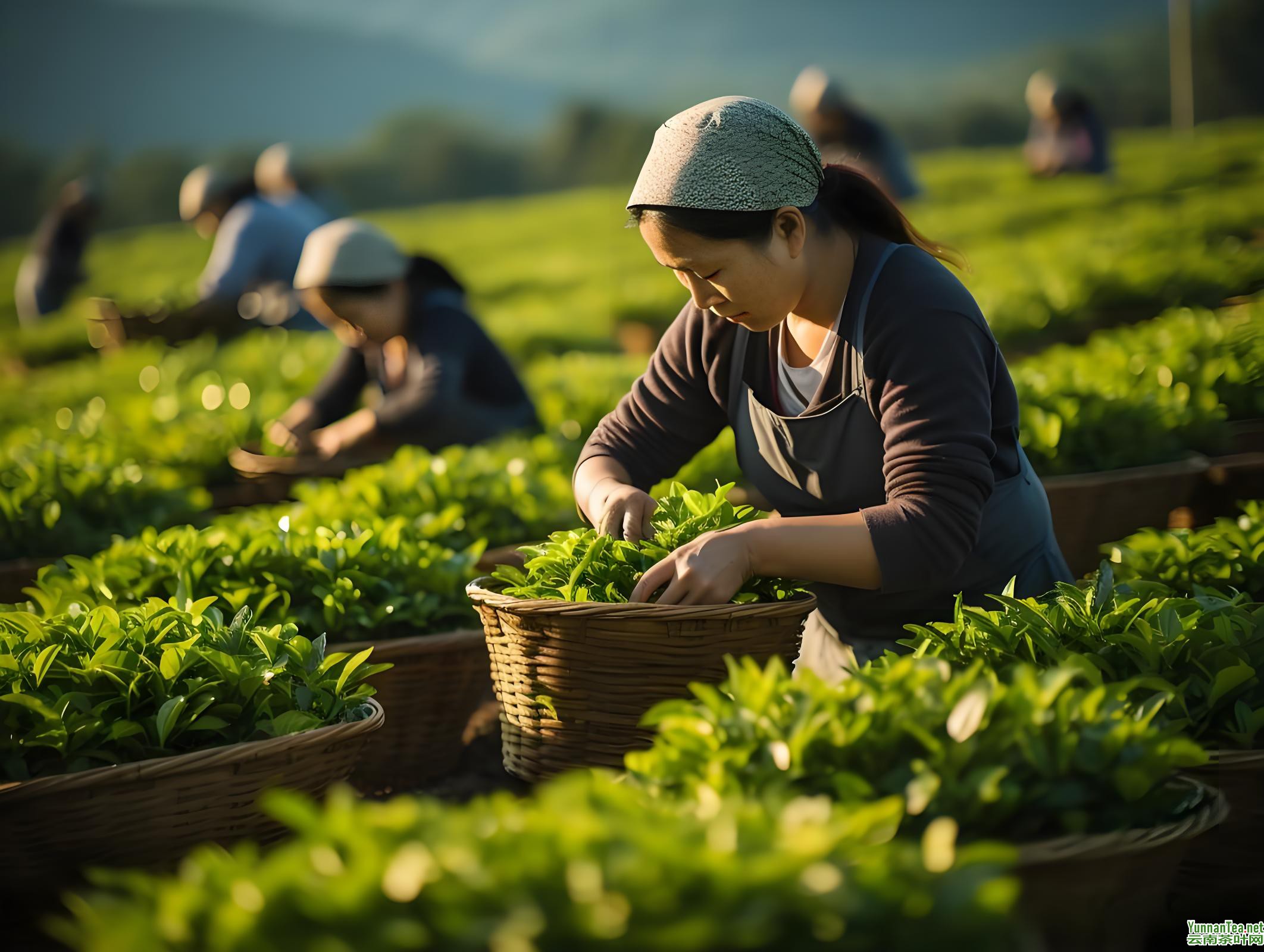
云南,这片被北回归线温柔穿过的红土地,以其独特的地理风貌与多元民族文化,孕育出中国最具生命力的茶叶文明。作为世界茶树起源地之一,云南茶叶不仅承载着数千年的种植与饮用历史,更在当代茶产业中占据着不可替代的地位。从海拔千米的古茶树群落,到茶马古道上的马蹄声碎,从少数民族的古老茶俗到现代茶企的创新实践,云南茶叶的故事,是自然与人文共同书写的恢弘史诗。
一、地理基因:造物主的偏心馈赠
云南茶叶的卓越品质,首先源于其不可复制的地理环境。这片位于中国西南边陲的高原,平均海拔1500-2000米,北有青藏高原阻挡寒流,南受印度洋暖湿气流滋养,形成了“一山分四季,十里不同天”的立体气候。
土壤密码:以红壤、黄壤为主,富含茶多酚合成必需的铁、铝等矿物质,且有机质含量高达3%-5%,为茶树生长提供了天然养分库。西双版纳的砖红壤、普洱的赤红壤、临沧的黄棕壤,不同区域的土壤特性,直接造就了茶叶风味的差异化。
气候禀赋:年平均气温15-22℃,昼夜温差普遍达10℃以上,有利于茶树积累氨基酸与芳香物质;年降水量1200-2000毫米,且多集中在雨季,配合云雾缭绕的山区环境,形成了“漫射光多、紫外线强”的独特光照条件——前者提升茶叶鲜爽度,后者促进茶多酚与儿茶素的合成,奠定了云南茶“浓强鲜爽”的基调。
生态优势:作为中国生物多样性最丰富的地区,云南茶园多与森林共生,形成“上层乔木、中层茶树、下层草本”的立体生态系统。古茶树与樟树、栎树、榕树等伴生,不仅减少病虫害,更通过植物间的物质交换,赋予茶叶独特的森林气韵。
二、历史脉络:从野生古茶到茶马传奇
云南茶叶的历史,可追溯至人类文明的源头。1980年,在思茅地区发现的宽叶木兰化石(距今约3540万年),证实了这里是茶树始祖的诞生地;而镇沅县千家寨的野生古茶树(树龄2700年)、勐海县巴达山的大茶树(树龄1700年),则见证了从野生到栽培的漫长驯化过程。
早期起源:据《华阳国志·巴志》记载,早在商周时期,云南濮人已将茶叶作为贡品。唐代樊绰《蛮书》明确记载:“茶出银生城界诸山,散收无采造法。”银生城即今日普洱市景东县,说明当时滇南已形成规模化产茶区,只是加工方式尚处原始阶段。
茶马古道的崛起:宋代以后,随着藏区对茶叶需求的激增,以云南为起点的茶马古道逐渐成型。这条横跨川、滇、藏的贸易通道,将云南茶叶输送至雪域高原,同时也促进了制茶技术的革新。明代,普洱成为茶马互市的核心枢纽,“普洱府”的设立(1729年)标志着云南茶叶进入规范化发展阶段,“普洱茶”之名开始传遍天下。
近现代转型:民国时期,云南开始引入现代制茶技术,勐海茶厂(1940年)、下关茶厂(1941年)的建立,奠定了滇茶工业化的基础。新中国成立后,大规模茶园建设与品种改良(如“云抗10号”的培育),使云南茶叶产量跃居全国前列,而2008年“普洱茶制作技艺”入选国家级非物质文化遗产,则标志着其文化价值获得官方认可。
三、品类体系:云南茶叶的多元图景
云南并非只有普洱茶,这片土地孕育的茶叶品类,如同其民族构成般丰富多元。按制作工艺与发酵程度,可分为三大体系:
(一)普洱茶:时间赋予的味觉艺术
普洱茶是云南最具代表性的茶类,以“越陈越香”的独特属性闻名。其定义为“以地理标志保护范围内的云南大叶种晒青茶为原料,并在地理标志保护范围内采用特定的加工工艺制成”,核心产区包括西双版纳、普洱、临沧、保山四大区域。
生茶与熟茶:生茶采用自然发酵,新茶滋味强烈,苦中带涩,随着存放时间延长,逐渐转化为醇厚甘滑;熟茶则通过人工渥堆发酵(1973年研发成功),快速达成陈化效果,茶汤红浓明亮,滋味温润柔和。
山头特色:西双版纳易武山的茶以“香扬水柔”著称,兰香与蜜韵突出;勐海布朗山的茶则“霸气十足”,苦底明显但回甘迅速;临沧冰岛茶以“甜润清爽”见长,喉韵持久;普洱景迈山的茶自带“兰香蜜香”,因与古茶园共生的樟树影响,常带有独特的“山野气韵”。
(二)绿茶:鲜爽与清香的极致表达
云南绿茶以大叶种为原料,与江南绿茶的细腻相比,更显浓醇鲜爽。其制作工艺注重“杀青”与“揉捻”,最大限度保留茶叶的天然滋味。
代表性品类:滇绿(云南绿茶统称)、翠华茶(昆明宜良)、回龙茶(文山)、南糯白毫(西双版纳)等。其中,滇绿采用高温杀青(多为锅炒或滚筒杀青),揉捻成条后烘干,茶汤嫩绿明亮,栗香浓郁,滋味鲜爽回甘,既有大叶种的厚重,又不失绿茶的清新。
(三)红茶:浓强鲜甘的滇红风味
1938年,冯绍裘先生在云南凤庆创制滇红,开创了大叶种红茶的新纪元。云南红茶以“形美、色艳、香高、味浓”著称,是中国红茶出口的主力军。
品类细分:滇红功夫茶(条索紧结肥硕,金毫显露,滋味浓强鲜甘)、滇红碎茶(颗粒状,汤色红艳明亮,用于调饮)、古树红茶(以百年以上古茶树鲜叶为原料,香气馥郁,滋味醇厚,兼具果香与蜜韵)。
核心产区:凤庆(滇红发源地)、勐海、昌宁等地,其中凤庆红茶以“蜜糖香”为特色,勐海红茶则带有独特的“焦糖香”。
四、产业格局:从茶园到茶杯的全链条生态
云南茶叶产业已形成从种植、加工到销售的完整体系,2024年全省茶叶种植面积达740万亩,体系48万吨,综合产值超千亿,从业人员超500万,是名副其实的支柱产业。
(一)核心产区分布
西双版纳州:以普洱茶为核心,拥有易武、勐海、勐腊三大产区,古茶树资源最丰富,是高端普洱茶的主要来源地。
临沧市:产量最大的普洱茶产区,同时也是滇红的重要产地,冰岛、昔归等山头茶声名远扬。
普洱市:“普洱茶”名称的起源地,茶园面积广阔,以生态茶、有机茶为发展方向,景迈山古茶园已被列入世界文化遗产。
保山市:滇西重要产茶区,以腾冲、昌宁为核心,既有传统普洱茶,也有高品质红茶。
(二)加工与品牌
云南茶叶加工已形成“传统工艺+现代技术”的融合模式。一方面,手工制茶技艺(如普洱茶的石磨压制)得到传承;另一方面,清洁化生产线、智能化发酵控制系统等现代设备的应用,提升了产品稳定性。
在品牌建设方面,既有“大益”“下关沱茶”等老字号,也有“雨林古茶坊”“陈升号”等新兴品牌,同时地方政府通过“地理标志保护”“有机认证”等方式,推动产业标准化发展。2023年,“普洱景迈山古茶林文化景观”成功列入世界遗产名录,成为全球首个以茶为主题的世界文化遗产,进一步提升了云南茶叶的国际影响力。
五、文化浸润:茶与云南的民族共生
在云南,茶叶早已超越饮品的范畴,融入各民族的生活与信仰,形成了丰富多彩的茶文化。
傣族的“竹筒茶”:将晒青茶装入新鲜竹筒,在火上烘烤,使茶叶吸收竹香,冲泡后既有茶香又有竹韵,是傣族待客的珍品。
彝族的“烤茶”:将茶叶放入陶罐中烘烤至焦香,注入沸水后饮用,茶汤浓烈,提神醒脑,常用于节庆聚会。
拉祜族的“土罐茶”:用特制土罐煮茶,煮出的茶汤醇厚浓烈,搭配烤玉米食用,是山区生活的真实写照。
纳西族的“三叠水”:以茶、酒、水三道饮品待客,其中第一道便是酥油茶,体现了茶马古道上多民族文化的交融。
此外,云南的茶俗还体现在节庆中,如普洱的“茶祖节”(祭祀茶神)、西双版纳的“茶王节”(庆祝丰收),这些活动不仅传承着古老的茶文化,更成为连接传统与现代的纽带。
六、未来展望:传统与创新的平衡之道
云南茶叶的发展,正面临机遇与挑战并存的局面。一方面,消费升级带动高品质茶叶需求增长,古树茶、有机茶等细分市场持续升温;另一方面,过度采摘、生态破坏、同质化竞争等问题也不容忽视。
未来,云南茶叶的可持续发展,需在以下方面着力:一是加强古茶树保护,推行生态种植模式,确保资源永续利用;二是深化产业链整合,从原料供应向品牌运营转型;三是挖掘文化价值,将茶文化与旅游、康养等产业融合,打造“茶旅融合”新模式。
从野生古茶树的千年守望,到现代化茶园的碧波万顷;从茶马古道上的马帮铃声,到电商平台的全球配送,云南茶叶的故事仍在继续。这片土地赋予它的,不仅是独特的风味,更是一种与自然和谐共生的智慧——正如普洱茶的陈化过程,时间会沉淀出最醇厚的滋味,而云南茶叶的未来,也必将在传统与创新的平衡中,书写更精彩的篇章。
Yunnan, this red soil land gently crossed by the Tropic of Cancer, has nurtured China's most vibrant tea civilization with its unique geographical features and diverse ethnic cultures. As one of the origins of tea trees in the world, Yunnan tea not only carries thousands of years of planting and drinking history, but also occupies an irreplaceable position in the contemporary tea industry. From the ancient tea tree community at an altitude of kilometers, to the sound of horse hooves on the ancient Tea Horse Road, from the ancient tea customs of ethnic minorities to the innovative practices of modern tea companies, the story of Yunnan tea is a magnificent epic written by both nature and culture.
1、 Geographic genes: a biased gift from the Creator
The excellent quality of Yunnan tea first stems from its irreplaceable geographical environment. This plateau is located on the southwestern border of China, with an average altitude of 1500-2000 meters. It is blocked by the Qinghai Tibet Plateau to the north and nourished by the warm and humid air currents of the Indian Ocean to the south, forming a three-dimensional climate of "one mountain with four seasons and ten miles of different days".
Soil Code: Mainly composed of red soil and yellow soil, it is rich in essential minerals such as iron and aluminum for tea polyphenol synthesis, and has an organic matter content of up to 3% -5%, providing a natural nutrient pool for tea tree growth. The soil characteristics of different regions, such as the brick red soil in Xishuangbanna, the red soil in Pu'er, and the yellow brown soil in Lincang, directly contribute to the differentiation of tea flavors.
Climate endowment: The annual average temperature is 15-22 ℃, and the temperature difference between day and night is generally over 10 ℃, which is conducive to the accumulation of amino acids and aromatic substances in tea trees; The annual precipitation is 1200-2000 millimeters, mostly concentrated in the rainy season, combined with the misty mountainous environment, forming a unique lighting condition of "diffuse light and strong ultraviolet rays" - the former enhances the freshness of tea leaves, while the latter promotes the synthesis of tea polyphenols and catechins, laying the foundation for Yunnan tea's "strong, fresh and refreshing" tone.
Ecological advantages: As the region with the richest biodiversity in China, Yunnan tea gardens often coexist with forests, forming a three-dimensional ecosystem of "upper trees, middle tea trees, and lower herbs". The ancient tea tree coexists with camphor trees, oak trees, banyan trees, etc., not only reducing pests and diseases, but also endowing tea with a unique forest charm through material exchange between plants.
2、 Historical context: from wild ancient tea to tea horse legend
The history of Yunnan tea can be traced back to the source of human civilization. In 1980, the discovery of the Wide leaved Magnolia fossil in the Simao area (approximately 35.4 million years ago) confirmed that this was the birthplace of the ancestor of tea trees; The wild ancient tea tree (2700 years old) in Qianjiazhai, Zhenyuan County, and the large tea tree (1700 years old) in Badashan, Menghai County, witnessed the long domestication process from wild to cultivation.
Early origin: According to the "Huayang Guozhi Ba Zhi", as early as the Shang and Zhou dynasties, the Pu people in Yunnan had already used tea as a tribute. During the Tang Dynasty, Fan Chuo's "Book of Barbarians" clearly recorded: "Tea was harvested from the mountains at the boundary of Yinsheng City, and there was no method of harvesting or making it." Yinsheng City is now Jingdong County, Pu'er City, indicating that a large-scale tea production area had already formed in southern Yunnan at that time, but the processing methods were still in the primitive stage.
The rise of the Tea Horse Ancient Road: After the Song Dynasty, with the surge in demand for tea in Tibetan areas, the Tea Horse Ancient Road starting from Yunnan gradually took shape. This trade route spanning Sichuan, Yunnan, and Tibet transported Yunnan tea to the snowy plateau, while also promoting innovation in tea making technology. In the Ming Dynasty, Pu'er tea became the core hub of tea horse trade. The establishment of "Pu'er Prefecture" (1729) marked the standardized development stage of Yunnan tea, and the name "Pu'er tea" began to spread throughout the world.
Modern Transformation: During the Republic of China period, Yunnan began to introduce modern tea making technology, and the establishment of Menghai Tea Factory (1940) and Xiaguan Tea Factory (1941) laid the foundation for the industrialization of Yunnan tea. After the establishment of the People's Republic of China, large-scale tea garden construction and variety improvement (such as the cultivation of "Yunkang 10") led to Yunnan's tea production ranking among the top in the country. In 2008, "Pu'er Tea Making Techniques" was selected as a national intangible cultural heritage, marking the official recognition of its cultural value.
3、 Category System: The Diverse Landscape of Yunnan Tea
Yunnan is not just about Pu'er tea. The tea varieties nurtured in this land are as rich and diverse as its ethnic composition. According to the production process and fermentation degree, it can be divided into three major systems:
(1) Pu erh tea: the art of taste endowed by time
Pu erh tea is the most representative type of tea in Yunnan, known for its unique attribute of "becoming more fragrant with age". It is defined as "using Yunnan large leaf sun dried green tea within the scope of geographical indication protection as raw material, and using specific processing techniques to make it within the scope of geographical indication protection". The core production areas include Xishuangbanna, Pu'er, Lincang, and Baoshan.
Raw tea and ripe tea: Raw tea is naturally fermented, and new tea has a strong taste, with a bitter and astringent taste. With prolonged storage time, it gradually transforms into a mellow and smooth taste; Mature tea is rapidly aged through artificial pile fermentation (successfully developed in 1973), resulting in a rich and bright red tea soup with a warm and soft taste.
Shantou characteristics: The tea from Yiwu Mountain in Xishuangbanna is known for its "fragrant and gentle water", with prominent orchid and honey flavors; The tea from Menghai Brown Mountain is full of dominance, with a clear bitterness but a quick return to sweetness; Lincang Icelandic tea is known for its "sweet and refreshing" flavor, with a long-lasting aftertaste; The tea from Jingmai Mountain in Pu'er has its own "orchid fragrance and honey fragrance", which is often influenced by the camphor tree that coexists with ancient tea gardens, giving it a unique "mountain wild charm".
(2) Green tea: the ultimate expression of freshness and fragrance
Yunnan green tea is made from large leaf seeds, and compared to the delicacy of Jiangnan green tea, it is more rich, mellow, and refreshing. The production process emphasizes "withering" and "rolling" to preserve the natural flavor of tea leaves to the greatest extent possible.
Representative categories: Yunnan green tea (collectively known as Yunnan green tea), Cuihua tea (Yiliang, Kunming), Huilong tea (Wenshan), Nannuo white hair (Xishuangbanna), etc. Among them, Dian Lv adopts high-temperature withering (mostly pan frying or drum withering), rolls into strips and dries them. The tea soup is tender and bright green, with a rich chestnut aroma and a fresh and sweet taste. It has the weight of large leaf seeds while still retaining the freshness of green tea.
(3) Black Tea: Strong, Fresh, and Sweet Yunnan Red Flavor
In 1938, Mr. Feng Shaoqiu created Dian Hong tea in Fengqing, Yunnan, ushering in a new era of large leaf black tea. Yunnan black tea is known for its beautiful appearance, vibrant color, high aroma, and strong flavor, and is the main force in China's black tea exports.
Category segmentation: Dianhong Kung Fu Tea (tightly tied and plump, with visible golden hairs, strong and fresh taste), Dianhong Broken Tea (granular, bright red soup color, used for blending), Ancient Tree Black Tea (made from fresh leaves of tea trees over a hundred years old, with rich aroma, mellow taste, and a combination of fruit aroma and honey flavor).
Core production areas: Fengqing (the birthplace of Dianhong), Menghai, Changning, etc. Among them, Fengqing black tea is characterized by its "honey aroma", while Menghai black tea has a unique "caramel aroma".
4、 Industrial pattern: full chain ecology from tea gardens to tea cups
The tea industry in Yunnan has formed a complete system from planting, processing to sales. By 2024, the tea planting area in the province will reach 7.4 million mu, with a system of 480000 tons, a comprehensive output value of over 100 billion yuan, and more than 5 million employees. It is truly a pillar industry.
(1) Distribution of core production areas
Xishuangbanna Prefecture: With Pu'er tea as its core, it has three major production areas: Yiwu, Menghai, and Mengla. It has the richest resources of ancient tea trees and is the main source of high-end Pu'er tea.
Lincang City: The largest Pu'er tea production area and also an important producer of Dianhong tea. Mountain top teas such as Iceland and Xigui are well-known.
Pu'er City: The birthplace of the name "Pu'er Tea", with a vast tea garden area and a focus on ecological and organic tea development. Jingmai Mountain Ancient Tea Garden has been listed as a World Cultural Heritage site.
Baoshan City: an important tea producing area in western Yunnan, with Tengchong and Changning as the core. It has both traditional Pu'er tea and high-quality black tea.
(2) Processing and branding
Yunnan tea processing has formed a fusion model of "traditional craftsmanship+modern technology". On the one hand, handmade tea making techniques such as stone grinding and pressing of Pu'er tea have been inherited; On the other hand, the application of modern equipment such as clean production lines and intelligent fermentation control systems has improved product stability.
In terms of brand building, there are both old brands such as "Dayi" and "Xiaguan Tuocha", as well as emerging brands such as "Rainforest Ancient Tea House" and "Chensheng Hao". At the same time, local governments promote industrial standardization development through methods such as "geographical indication protection" and "organic certification". In 2023, the "Pu'er Scenery and Maishan Ancient Tea Forest Cultural Landscape" was successfully included in the The World Heritage List, becoming the world's first tea themed world cultural heritage, further enhancing the international influence of Yunnan tea.
5、 Cultural Infiltration: Tea and Ethnic Coexistence in Yunnan
In Yunnan, tea has long transcended the realm of beverages and integrated into the lives and beliefs of various ethnic groups, forming a rich and colorful tea culture.
Dai ethnic group's "bamboo tube tea": Fresh bamboo tubes are filled with sun dried green tea and baked over fire to absorb the bamboo fragrance. After brewing, the tea leaves have both tea aroma and bamboo charm, making it a precious delicacy for Dai people to entertain guests.
Yi ethnic group's "roasted tea": tea leaves are roasted in pottery jars until fragrant, then poured into boiling water before drinking. The tea soup is strong and refreshing, often used for festivals and gatherings.
The "earthen pot tea" of the Lahu ethnic group: brewed in a special earthen pot, the tea soup is rich and strong, and is paired with roasted corn for consumption, which is a true portrayal of mountain life.
The "San Die Shui" of the Naxi people: They entertain guests with three beverages: tea, wine, and water. The first one is butter tea, which reflects the integration of multi-ethnic cultures on the ancient Tea Horse Road.
In addition, Yunnan's tea customs are also reflected in festivals, such as Pu'er's "Tea Ancestor Festival" (worshiping the Tea God) and Xishuangbanna's "Tea King Festival" (celebrating harvest). These activities not only inherit the ancient tea culture, but also become a link between tradition and modernity.
6、 Future Outlook: The Way to Balance Tradition and Innovation
The development of Yunnan tea is facing both opportunities and challenges. On the one hand, the upgrading of consumption has driven the growth of demand for high-quality tea, and segmented markets such as ancient tree tea and organic tea continue to heat up; On the other hand, issues such as excessive harvesting, ecological damage, and homogeneous competition cannot be ignored.
In the future, the sustainable development of Yunnan tea needs to focus on the following aspects: firstly, strengthening the protection of ancient tea trees, promoting ecological planting models, and ensuring the sustainable use of resources; Secondly, deepen the integration of the industrial chain and transform from raw material supply to brand operation; The third is to explore cultural value, integrate tea culture with tourism, health and wellness industries, and create a new model of "tea tourism integration".
From the millennium watch of wild ancient tea trees to the vast expanse of modern tea gardens; The story of Yunnan tea continues, from the sound of caravan bells on the ancient Tea Horse Road to global delivery on e-commerce platforms. This land endows it not only with a unique flavor, but also with a wisdom of harmonious coexistence with nature - just like the aging process of Pu'er tea, time will precipitate the most mellow taste, and the future of Yunnan tea will also write a more colorful chapter in the balance of tradition and innovation.
